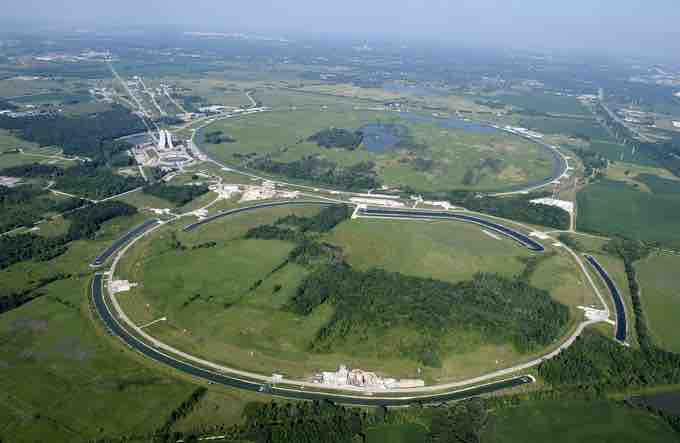A particle accelerator is a device that uses electromagnetic fields to propel charged particles to high speeds and to contain them in well-defined beams. While current particle accelerators are focused on smashing subatomic particles together, early particle accelerators would smash entire atoms together, inducing nuclear fusion and thus nuclear transmutation.
Nuclear transmutation is the conversion of one chemical element or isotope into another. In other words, atoms of one element can be changed into atoms of another element by transmutation. This occurs either through nuclear reactions in which an outside particle reacts with a nucleus, which can be supplied by a particle accelerator, or through radioactive decay, where no outside particle is needed.
History of Nuclear Transmutation
The term transmutation dates back to alchemy. Alchemists pursued the philosopher's stone, capable of the transformation of base metals into gold. The impossibility of the metallic transmutation had been debated amongst alchemists, philosophers, and scientists since the Middle Ages. In the 18th century, Antoine Lavoisier replaced the alchemical theory of elements with the modern theory of chemical elements, and later John Dalton further developed the notion of atoms to explain various chemical processes. The disintegration of atoms is a distinct process involving much greater energies than could be achieved by alchemists.
Nuclear transmutation was first consciously applied to modern physics by Frederick Soddy when he, along with Ernest Rutherford, discovered that radioactive thorium was converting itself into radium in 1901. At the moment of realization, Soddy later recalled, he shouted out: "Rutherford, this is transmutation!" Rutherford snapped back, "For Christ's sake, Soddy, don't call it transmutation. They'll have our heads off as alchemists."
Particle Accelerators
There are two basic classes of accelerators: electrostatic and oscillating field accelerators. Electrostatic accelerators use static electric fields to accelerate particles. A small-scale example of this class is the cathode ray tube in an ordinary, old television set. Other examples are the Cockcroft–Walton generator and the Van de Graaf generator. The achievable kinetic energy for particles in these devices is limited by electrical breakdown. Oscillating field accelerators, on the other hand, use radio frequency electromagnetic fields to circumvent the breakdown problem. This class, development for which started in the 1920's, is the basis for all modern accelerator concepts and large-scale facilities. Rolf Widerøe, Gustav Ising, Leó Szilárd, Donald Kerst and Ernest Lawrence are considered pioneers of the field, conceiving and building the first operational linear particle accelerator, the betatron, and the cyclotron.
Since colliders can give evidence on the structure of the subatomic world, accelerators were commonly referred to as atom smashers in the 20th century. Despite the fact that most accelerators (with the exception of ion facilities) actually propel subatomic particles, the term persists in popular usage when referring to particle accelerators in general.

Fermi National Accelerator Laboratory
Aerial photo of the Tevatron at Fermilab, which resembles a figure eight. The main accelerator is the ring above; the one below (about half the diameter, despite appearances) is for preliminary acceleration, beam cooling and storage, etc.
Predicting the products of transmutation is like predicting the products of radioactive decay. It is important to make sure that the total atomic mass and atomic numbers of both sides of the equation remain equal.